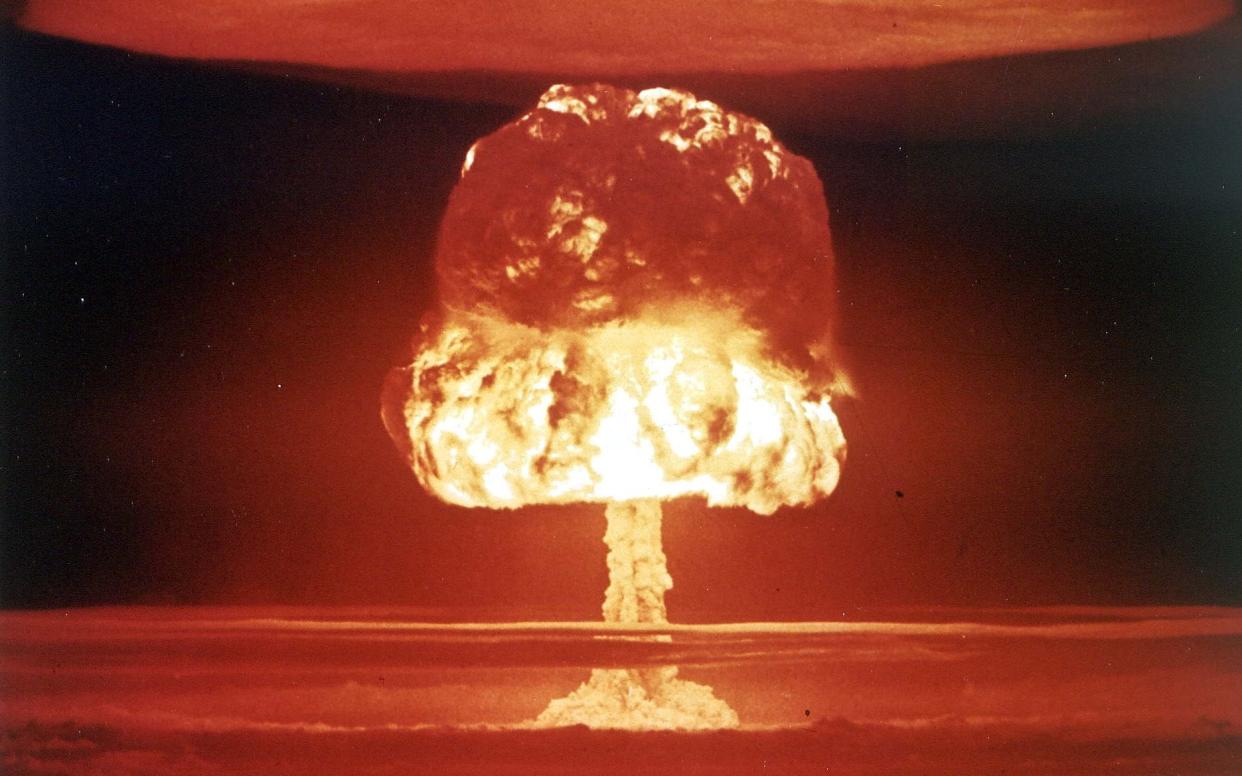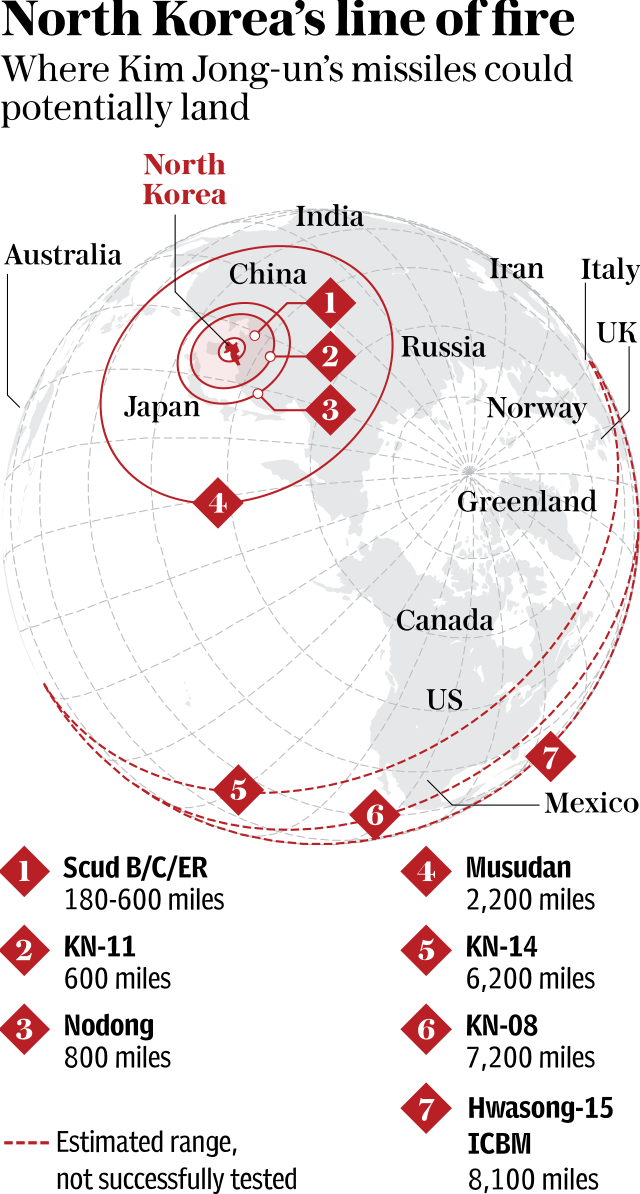How many nukes are in the world and what could they destroy?

Tensions over nuclear weapons have been raised over tensions on the Korean peninsula, after North Korea claimed to have successfully test-launched an intercontinental ballistic missile.
Previously, Donald Trump's defence secretary Jim 'Mad Dog' Mattis warning North Korea of an "effective and overwhelming" response if Pyongyang used nuclear weapons.
His warning came amid concerns that North Korea may be preparing to test a new ballistic missile.
In December, Russian President Vladimir Putin told a meeting of defence chiefs that strengthening nuclear capability should be a key objective for 2017. The then US President-elect then took to Twitter to respond, vowing to do the same.
Such rhetoric has led to concerns about the world's nuclear capacity and the unpredictability of those in charge of the warheads.
The United States must greatly strengthen and expand its nuclear capability until such time as the world comes to its senses regarding nukes
— Donald J. Trump (@realDonaldTrump) December 22, 2016
It seems the world is a long way from "coming to its senses" - with millions of kilotons already in military service around the world.
Between them, the world's nuclear-armed states have around 15,500 warheads - the majority of which belong to the US and Russia.
It is estimated that 10,000 of these are in military service, with the rest awaiting dismantlement, according to the Arms Control Association.
Which countries have nuclear weapons?
There are five nuclear-weapon states in the world: China, France, Russia, United Kingdom and the United States. These are officially recognised as possessing such weapons by the Treaty on the Non-Proliferation of Nuclear Weapons.
This treaty acknowledges and legitimises their arsenals, but they are not supposed to build or maintain them forever. Indeed, they have committed to eliminate them.
There are also four other countries that have nuclear weapons: Pakistan, India, Israel and North Korea. These countries didn't sign the Treaty, and together possess an estimated 338 nuclear weapons.
But it's Russia and the US that have by far the most in the world - dominating all other countries by collectively sharing 93 per cent of the world's arsenal.

How deadly could these weapons be?
The world's current collection of 15,400 nuclear weapons possesses enough power to kill millions of people and flatten dozens of cities.
According to Telegraph research, it is estimated that the US and Russian arsenals combined have power equating to 6,600 megatons. This is a tenth of the total solar energy received by Earth every minute.
According to the NukeMap website, the dropping of the B-83, the largest bomb in the current US arsenal, would kill 1.4m people in the first 24 hours. A further 3.7m people would be injured, as the thermal radiation radius reached 13.km.
Likewise, the "Tsar Bomba" is the largest USSR bomb tested. If this bomb was dropped on New York, it is estimated that it could kill 7.6m people and injure 4.2m more. The nuclear fallout could reach an approximate area of 7,880km on a 15mph wind, impacting millions more people.
Both America and Russia's arsenals are regulated by several treaties that place limits on the numbers and kinds of warheads and delivery systems they have.
If either country were to expand their nuclear capacity even further, as Trump and Putin have hinted at, it could shatter these agreements and plunge the world into a new Cold War.

Our figures on nuclear weapons, based on statistics from the Arms Control Association, are mainly estimates because of the secretive nature with which most governments treat information about their arsenals.

 Yahoo News
Yahoo News 
